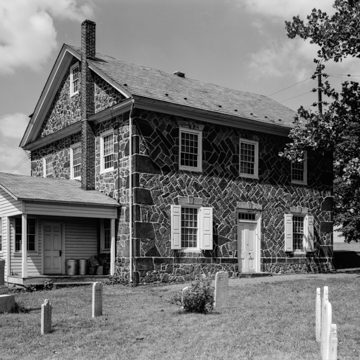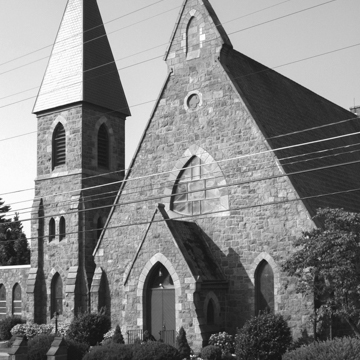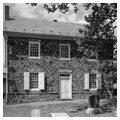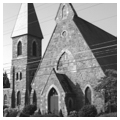St. Gabriel's began as a Swedish log church in the 1730s. Like other Swedish national churches, it joined with the Episcopalians when the Swedes no longer sent missionaries. In 1801 its congregation constructed a stone meetinghouse derived from the regional dissenting churches, with its principal door in the center of the long side facing a pulpit on the opposite wall. It is remarkable on the exterior for its decorative herringbone stonework on the two sides toward the road as well as for the largely complete though restored interior. Later the balcony was filled in to create a second story, and the old church was adapted as town library and Sunday school. The alterations were undone in a restoration between 1960 and 1975 supervised by G. Edwin Brumbaugh.
The adjacent church was designed in 1880 by a “Mr. Fink,” presumably Andrew Fink Jr., Levi Focht's partner. Its front bell-cote and rear rectangular apse show the continuing influence of St. James the Less Episcopal Church in Philadelphia ( PH136).










